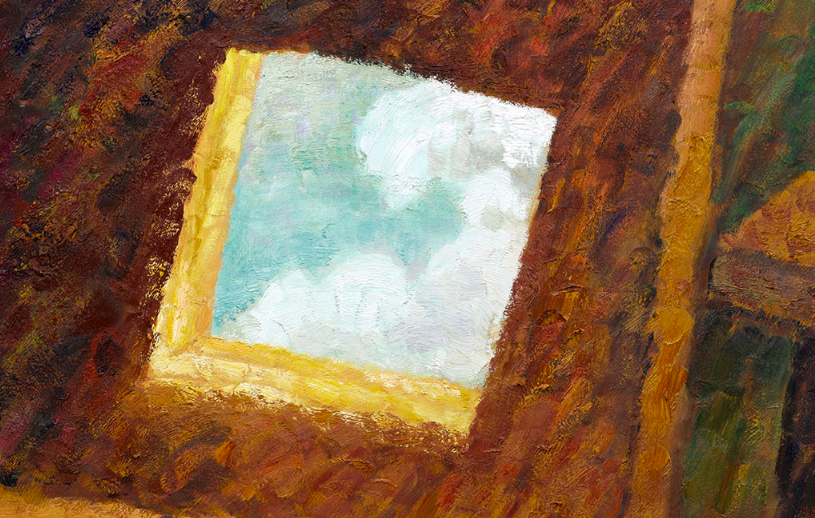Keegan Monaghan’s paintings feel like the moldy nooks and crannies of a house or a well-worn shoe, rendered in epic and compact proportions. Their compositions shiver with an eerie affection akin to the apparitional creaking of my old, poorly insulated apartment. The passing of time is traced in the calcified goop that lines the maze of termite cavities in my floorboards, the layers upon layers of paint coagulating beneath the brim of molding, welling up like petrified tears.
At first glance, Monaghan’s paintings present as pure abstractions, intriguing compositions of indeterminate color and form. To fully grasp the nuances and peculiarity of Monaghan’s prickly, overworked surfaces and grotesque application of paint, requires my slow and intimate attention. A kaleidoscope of color permeates the painting’s stuccoey surfaces; the vibrancy and variation in each brushstroke are almost indistinguishable from afar—like grains of sand. Familiar shapes and shadows emerge as vague, fragmented impressions—images of woodgrain, a table’s edge, the frayed fringe of a rug—windows, screens, and shadows of all kinds evoke a domestic, architectural geology of the mundane. Monaghan messes with proportion and scale to evoke a sort of vertigo; an uncanny feeling inherent in the psychologically charged spaces we inhabit, making paintings that are architecturally and mathematically off-kilter, like retrograde studies on Renaissance perspectivism. While the paintings appear devoid of any human figure, there is an eerie underlying presence in their absence.
Parker Gallery
2441 Glendower Ave
Los Angeles, CA 90027
On view through June 10, 2023


